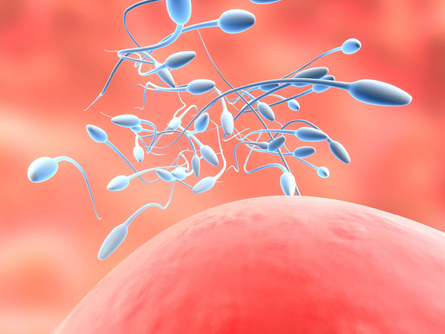Module 3
1. Module 3
1.11. Lesson 3
Module 3—The Male and Female Reproductive Systems
Lesson 3—Sperm and Egg Development
 Get Focused
Get Focused

© Sebastian Kaulitzki/123RF Limited
In order for reproduction and perpetuation of the species to occur, functional gametes must be formed. To form functional gametes, supporting structures must help develop and protect the sperm and egg cells. For most couples, these structures function as they should. However, for some couples these supporting structures do not function well or at all, and problems with fertility can occur. Ultimately, infertility is the result of an abnormality in either the sperm or the egg or the body’s ability to support conception to birth.
José and Maria are the second couple in “A Fertility Case Study.” José had not been aware of any reproductive problems in his body. However, when he and Maria decided to have a baby and did not conceive, they underwent various tests to determine why they were not conceiving. One of the first fertility tests performed on a man is a sperm analysis. José’s sperm analysis showed a low sperm count.
A sperm analysis determines certain characteristics of semen and the sperm contained within the semen. An abundance of abnormalities with the sperm can result in a reduced fertility rate. Sperm must develop correctly in order to be able to successfully complete their function of fertilizing an egg cell. To gain a better appreciation of what a sperm analysis examines and how its findings indicate fertility issues, it is important to understand how gametes, both sperm and egg cells, are developed.
In Lessons 1 and 2 you learned that sperm, the functional unit of the male reproductive system, are produced and matured in the testes and that the ovum, the functional unit of the female reproductive system, is produced and matured in the ovaries. In Lesson 3 you will further your understanding of gamete development—first the sperm and then the ovum. You will investigate the following focusing questions:
-
How do sperm and egg cells develop into functional gametes?
-
What supporting structures help in the development of a fully functional gamete?
 Module 3: Lesson 3 Assignment
Module 3: Lesson 3 Assignment
Download a copy of the Module 3: Lesson 3 Assignment to your computer now. You will receive further instructions about how to complete this assignment later in the lesson.
You must decide what to do with the questions that are not marked by the teacher.
Remember that these questions provide you with the practice and feedback that you need to successfully complete this course. You should respond to all of the questions and place those answers in your course folder.
During this lesson you will continue the Unit B Assessment project, “A Fertility Case Study.” In addition to your lesson work, store any notes about the infertile couples you learn about in your course folder for your teacher’s feedback.
While you are completing this lesson, there will be many opportunities for you to acquire, understand, and practise the concepts that are presented to you. As you complete these activities, as well as your summary notes, you will file everything in your course folder to reference when you are preparing for exams.
Remember that you also have the option of trying additional questions from the textbook for further practice. Consult with your teacher for the answers to these questions. The Key will also provide you with many Diploma Exam-style multiple-choice, numerical-response, and written-response questions that will be an excellent review of the module. Practising your responses to these types of questions is good preparation for the Diploma Exam.